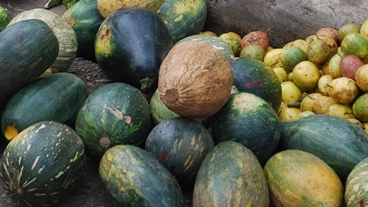Agriculture employs a fifth of workers in the Caribbean and generates a significant income for the region. Many countries are highly vulnerable to natural disasters and defenceless against price swings. Nonetheless the industry remains, in the main, uninsured against major shocks.
These are the findings of a new World Bank report, ‘Agricultural Risk Management in the Caribbean’, which details the experiences and lessons learnt in the region between 2009 and 2012.
In the past 20 years, Caribbean countries have, each year, spent between 1 and 9% of their GDP dealing with the effects of weather hazards. In addition, changing preferences within the European market have contracted the region’s traditional exports - sugar, bananas, cocoa and rice.
As a consequence the agriculture sector has been stagnating as farmers and governments have to absorb the costs of weather hazards and price fluctuations. This, in turn, has lead to lower rural income levels, increased poverty, and reduced economic growth and competitiveness.
With the exception of the banana industry in the Eastern Caribbean and a public insurance company in the Dominican Republic, agricultural insurance against natural disasters is non-existent in the region.
According to the FAO, in 8 Caribbean countries 90% of the farms have less than 10 hectares and grow multiple crops. These small farms represent over half of the available agricultural land.
Therefore, making affordable insurance available to all those small-holders has proved highly problematic.
The World Bank, has been working to overcome some of these limitations:
- In 2007, the Bank launched the Caribbean Catastrophic Risk Insurance Facility (CCRIF) to help countries fund early reconstruction following natural disasters such as hurricanes and earthquakes. Covering the first few months after a disaster, claims are paid to participating governments based on the type of event rather than by assessing actual losses allowing for transparency and low-settlement costs.
- Following successes in Africa and Asia, the Bank has supported countries in beginning to implement market-based instruments, such as insurance and price-risk management, in the agricultural sector.
Small farmers, the most affected
Agricultural activity in the Dominican Republic is centered on two crops: sugar cane and rice. Representing 11% of GDP and nearly 15% of employment, it is particularly important for the country to reduce agriculture’s vulnerability to natural disasters.
Previously, natural disasters have taken a heavy toll on the country’s finances. Public expenditure during Tropical Storms Noel and Olga in 2007 was around 0.6% of GDP and reached 1.6% of GDP during 2004’s Hurricane Jeanne.
The most destructive storms hit in 1998 with Hurricane George and in 1979 with Tropical Storm Federico, resulting in economic losses equivalent to 16.1% and 18.4%of GDP respectively.
Experience shows that hurricanes, tropical storms, earthquakes, landslides, flooding and droughts mainly affect small farmers (fewer than 3.13 ha.), who make up 72% of total farmers, and account for 28% of agricultural land.
Bank Support
The World Bank is supporting the Dominican Government in improving their response to disasters, especially regarding helping small farmers. They are also working on designing a specific insurance to covering rainfall and hurricane risks in the agriculture industry.
A further goal is to increase productivity and reduce vulnerability of at least 2,300 small-scale farmers in the poorest areas of the Dominican Republic, incentivizing the purchase and use of new technology.

